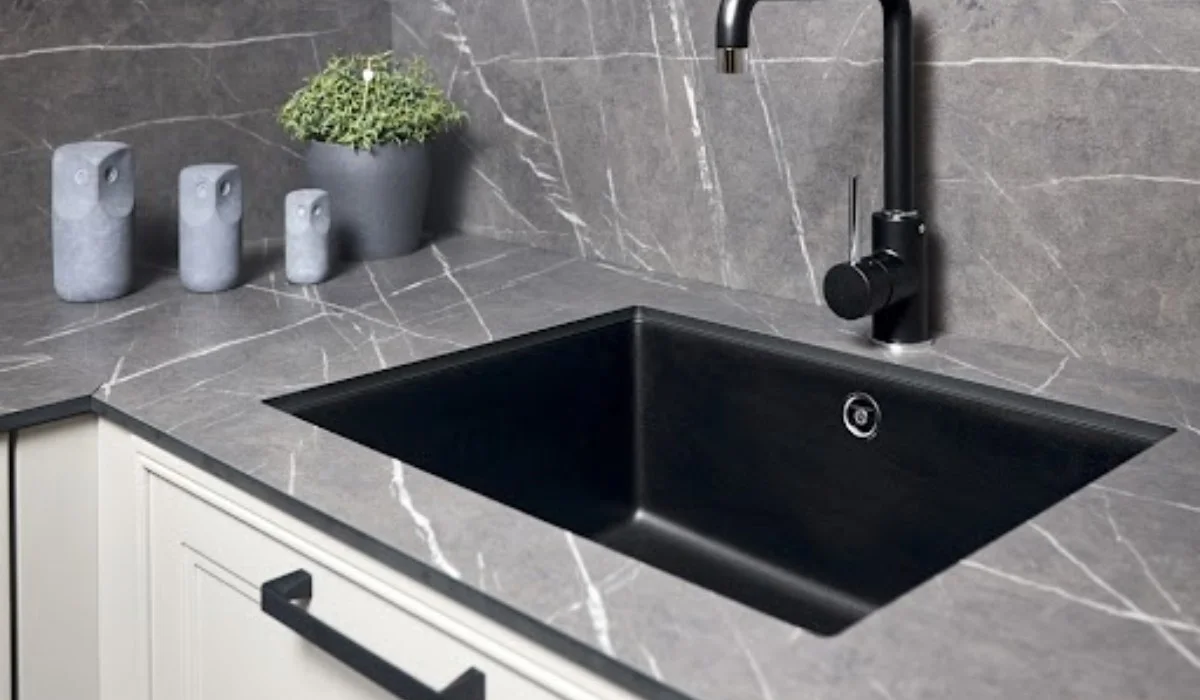If you are thinking about updating your kitchen, picking the right sink is an important decision. Two popular types are Butler sinks and Belfast sinks. They might look similar, but they have some differences that could affect your choice. In this guide, we’ll explain what these sinks are, how they differ and help you decide which one might be the best fit for your kitchen. Whether you are looking for style, practicality or both, understanding these sinks will make your kitchen renovation easier and more rewarding.
See also: Top 5 kitchen lighting trends of 2024
What is Butler Sink?

Source: Pinterest/ Tap Warehouse
A Butler sink, also known as a farmhouse sink, is a deep, rectangular sink traditionally made from fireclay. Its design features a smooth, apron front that extends slightly over the cabinetry. Originating in the UK, it was designed for heavy use in large, busy kitchens. The most distinctive feature of a Butler sink is its simplicity and flat front, making it a favourite in both traditional and modern kitchen designs.
What is Belfast Sink?

Source: Pinterest/ Victorian Plumbing
The Belfast sink, similar to the Butler, is also a rectangular, fireclay sink with an apron front. However, it originates from Belfast, Ireland, where having a large sink with a weir overflow to prevent spilling was necessary due to the ample water supply. The Belfast sink is slightly larger and deeper than the Butler and includes an overflow to avoid water spillage.
Key differences between Butler and Belfast Sinks
Overflow
- Butler Sink: Typically does not include an overflow.
- Belfast Sink: Includes a weir overflow to manage excess water.
Size
- Butler Sink: Generally less deep compared to a Belfast sink.
- Belfast Sink: Deeper, allowing more room for dishes and larger kitchen items.
Style and usage
- Butler Sink: Ideal for both traditional and contemporary kitchens; focuses on aesthetics and functionality.
- Belfast Sink: Best suited for larger kitchens that require a sink capable of handling a lot of use and water.
Pros and cons
Pros
- Both sink types offer a deep basin ideal for large items.
- Fireclay construction ensures durability and resistance to scratches and chips.
- The apron front design is not only stylish but also practical, reducing water spillage onto cabinetry.
Cons
- Both types can be more expensive than standard sinks.
- The weight of the fireclay requires sturdy cabinet support.
- Limited to no overflow in Butler sinks can be a disadvantage if not monitored.
Choosing the right sink for your kitchen
When deciding between a Butler and a Belfast sink, consider the following:
- Kitchen size: A Belfast sink might be more practical in larger kitchens due to its size and depth.
- Aesthetic: Consider which style aligns with your kitchen’s design theme.
- Functionality: Think about the usability and the amount of use the sink will get.
FAQs
Can Butler and Belfast sinks be installed in any type of kitchen cabinet?
Both Butler and Belfast sinks require sturdy cabinet support due to their heavy fireclay construction. It’s essential to ensure that your cabinetry is reinforced to handle the weight. Typically, custom cabinetry is recommended to accommodate the unique size and weight of these sinks.
Are there colour options available for Butler and Belfast sinks?
Traditionally, both Butler and Belfast sinks come in white, which is the most popular choice due to its classic look. However, manufacturers now offer these sinks in a variety of colours, including off-white, grey and black, to match different kitchen aesthetics.
What is the main functional advantage of having a Belfast sink over a Butler sink?
The main advantage of a Belfast sink is its deeper basin and built-in overflow system, which helps manage excess water and prevent spills, making it ideal for heavy usage in larger kitchens.
How do you maintain and clean Butler and Belfast sinks?
Both types of sinks should be cleaned with non-abrasive cleaners. Avoid harsh chemicals that can damage the fireclay surface. Regular cleaning with soapy water and a soft cloth is recommended. For tougher stains, baking soda mixed with water can be used to create a gentle scrubbing paste.
Are Butler and Belfast sinks only suitable for traditional kitchen designs?
No, while Butler and Belfast sinks both have a classic appeal, they can be seamlessly incorporated into modern kitchen designs as well. Their timeless design complements a wide range of styles, from rustic to contemporary.
| Got any questions or point of view on our article? We would love to hear from you. Write to our Editor-in-Chief Jhumur Ghosh at jhumur.ghosh1@housing.com |

Khushi Jha, a graduate in history and political science from the University of Delhi, doesn’t restrict herself to a single domain. Her passion for writing has led her to explore a wide spectrum of topics, ranging from fashion, health and lifestyle to technology, real estate and finance. She has written for platforms like TheVoiceOfWoman, Techsunk, Fitmist and Menskool, among others. When free, she enjoys reading books, including fiction, history and geopolitics.












